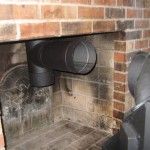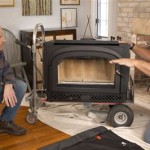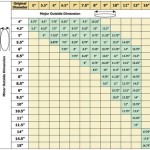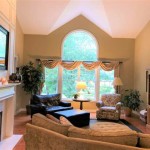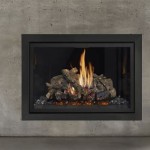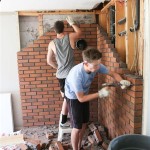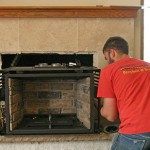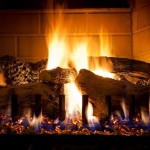Incorporate the following terms into the article naturally: "venting options," "ignition system," "heat output," "thermostat control," and "safety features."
Exploring the Capabilities of a 40000 BTU Gas Fireplace
A 40000 BTU (British Thermal Unit) gas fireplace represents a significant heating appliance, offering a balance of efficiency and comfort for residential spaces. Understanding its capabilities, features, and installation requirements is crucial for homeowners considering this type of heating solution. This article will delve into the specifics of a 40000 BTU gas fireplace, covering its performance characteristics, installation considerations, operational aspects, and key components.
The primary function of a gas fireplace is to provide supplemental heat. The 40000 BTU rating indicates the maximum amount of heat the appliance can generate per hour. This value is a crucial factor in determining whether the fireplace is suitable for a particular room or area. In general, a 40000 BTU output is often sufficient to heat a medium to large-sized room, approximately 400 to 600 square feet, depending on factors such as insulation levels, window efficiency, and climate.
Understanding Heat Output and Room Size
The relationship between BTU output and room size is not always linear. Factors beyond square footage influence the effectiveness of the fireplace. For example, a room with poor insulation will require a higher BTU output to achieve the same level of warmth as a well-insulated room. Similarly, rooms with a high number of windows or single-pane windows will experience greater heat loss, necessitating a more powerful heating source. Homeowners should assess their specific needs and consult with a qualified HVAC professional to determine the optimal BTU rating for their space. This assessment should factor in local climate conditions as well, as colder climates demand higher BTU outputs to maintain comfortable indoor temperatures.
Consideration should also be given to the type of room being heated. A living room, which is generally used for extended periods, might warrant a higher BTU output than a bedroom, where thermostat settings may be lower during sleeping hours. The desired level of comfort also plays a role. Some individuals prefer a consistently warm environment, while others are comfortable with slightly cooler temperatures.
Installation and Venting Options
Proper installation is paramount to the safe and efficient operation of a gas fireplace. A 40000 BTU gas fireplace requires a gas line connection, which must be performed by a licensed gas fitter. The gas line must be sized appropriately to deliver the necessary gas volume to the fireplace. Improper gas line sizing can lead to insufficient heat output or, in more severe cases, safety hazards.
One of the most crucial aspects of gas fireplace installation is the choice of venting. There are several venting options available, each with its own set of advantages and disadvantages. Direct vent fireplaces are a popular choice as they draw combustion air from outside and vent exhaust gases directly outside. This eliminates the need for a traditional chimney and reduces the risk of indoor air pollution. Vent-free fireplaces, on the other hand, do not require any venting and are designed to burn gas very cleanly, with minimal emissions. However, vent-free models often have restrictions on their usage and may not be permitted in all jurisdictions due to concerns about indoor air quality and moisture levels. B-vent fireplaces utilize existing chimneys, drawing combustion air from inside the home and venting exhaust gases up the chimney. The selection of the appropriate venting system is essential for safety, efficiency, and compliance with local building codes. Local codes and regulations should be consulted before any installation to determine the permitted venting options and any specific requirements.
In addition to the gas line and venting, electrical connections may be required for features such as electronic ignition, blowers, and remote controls. The electrical wiring must comply with local electrical codes and be performed by a qualified electrician. Proper grounding is essential for safety.
Operational Aspects and Safety Features
Operating a 40000 BTU gas fireplace is generally straightforward. Most models feature an ignition system, which can range from a simple pilot light to an electronic ignition system. Electronic ignition systems offer greater convenience and energy efficiency, as they eliminate the need for a constantly burning pilot light. Many modern gas fireplaces also include a remote control, allowing users to adjust the flame height, temperature, and blower speed from the comfort of their seating area. The thermostat control allows the fireplace to maintain a consistent temperature within the room. These thermostats can be simple dial-based controls or more sophisticated electronic interfaces with programmable settings.
Safety features are integral to the design of gas fireplaces. A crucial safety feature is a flame sensor, which monitors the presence of a flame. If the flame is extinguished, the gas supply is automatically shut off to prevent gas leaks. Many gas fireplaces also incorporate overheat protection mechanisms, which shut down the appliance if it reaches an excessively high temperature. Carbon monoxide detectors are strongly recommended in homes with gas fireplaces to provide an additional layer of protection against potential carbon monoxide leaks. Regular maintenance, including inspection of the venting system, gas connections, and burner assembly, is essential to ensure the safe and reliable operation of the fireplace.
The visual appeal of a gas fireplace is another important consideration. Modern gas fireplaces offer a wide range of aesthetic options, including realistic artificial logs, glass media, and various flame patterns. Some models even feature adjustable lighting to enhance the ambiance. The choice of aesthetic elements should complement the overall décor of the room.
The efficiency of a gas fireplace is typically measured by its AFUE (Annual Fuel Utilization Efficiency) rating. This rating indicates the percentage of fuel that is converted into usable heat. Higher AFUE ratings indicate greater energy efficiency, resulting in lower heating costs. Homeowners should consider the AFUE rating when selecting a gas fireplace to minimize energy consumption and reduce their environmental footprint.
The longevity of a gas fireplace depends on several factors, including the quality of the components, the frequency of use, and the level of maintenance. Regular cleaning and inspection can help to extend the lifespan of the appliance. It is important to follow the manufacturer's recommendations for maintenance and service. Professional servicing by a qualified technician is recommended at least once a year to ensure optimal performance and safety.
Ultimately, a 40000 BTU gas fireplace can be a valuable addition to a home, providing supplemental heat, aesthetic appeal, and increased comfort. Careful consideration of the factors outlined above, including heat output, installation requirements, venting options, operational aspects, and safety features, is essential for making an informed decision and ensuring the safe and efficient operation of the appliance.

Allen Roth 40000 Btu Black Steel Liquid Propane Outdoor Fireplace At Com

864 Tv 40k Deluxe Made In America Fireplace Xtrordinair

Majestic Echelon Ii Gas Direct Vent Linear Fireplace 48 Id 16436 Echel48 C Hvacdirect Com

Allen Roth 40000 Btu Wood Look Steel Liquid Propane Outdoor Fireplace In The Gas Fireplaces Department At Com

Nordik 34i Kozy Heat Fireplaces

Fireplace Xtrordinair 864 Tv 40k Gas Fireside Hearth And Leisure

Napoleon Hdx40 Gas Fireplace Direct Vent

American Gas Log Salisbury Split 24 In 40000 Btu Liquid Propane Burner Kit Vented Fireplace Logs And Remote The Department At Com

Fireplace Xtrordinair 864 Tv 40k Clean Face Gas Gallery Of Western Michigan

864 Tv 40k Clean Face Deluxe Made In America Fireplace Xtrordinair
Related Posts

